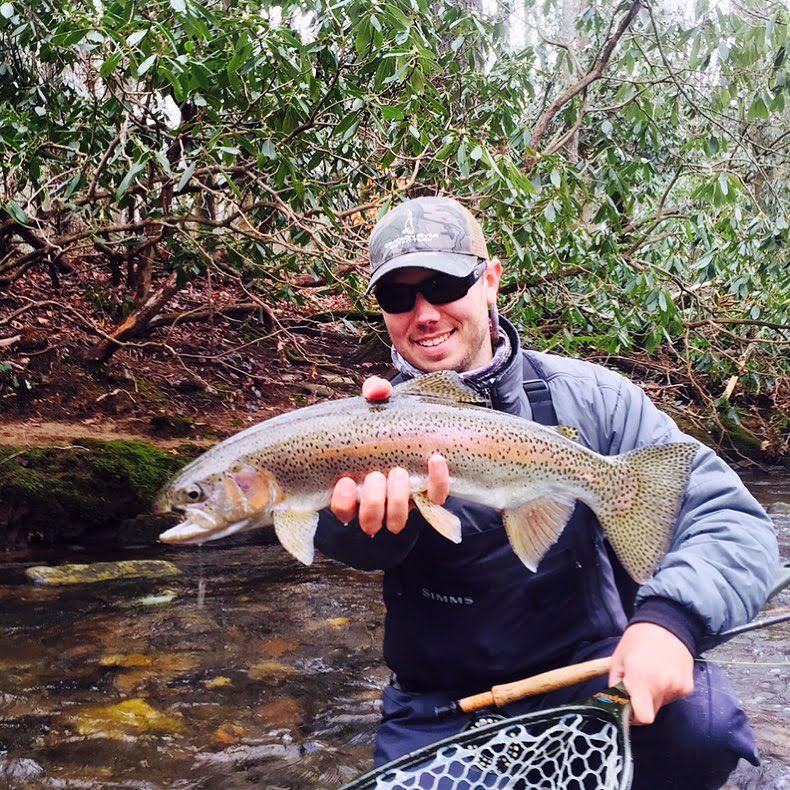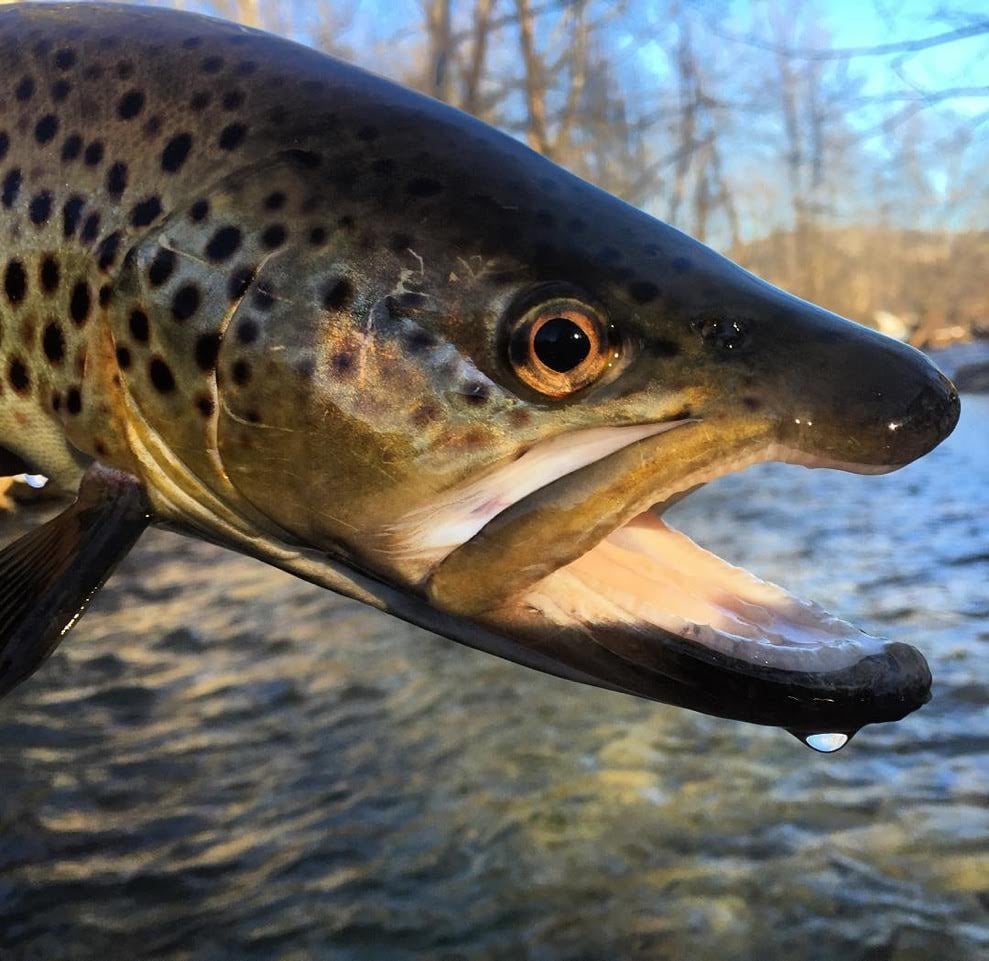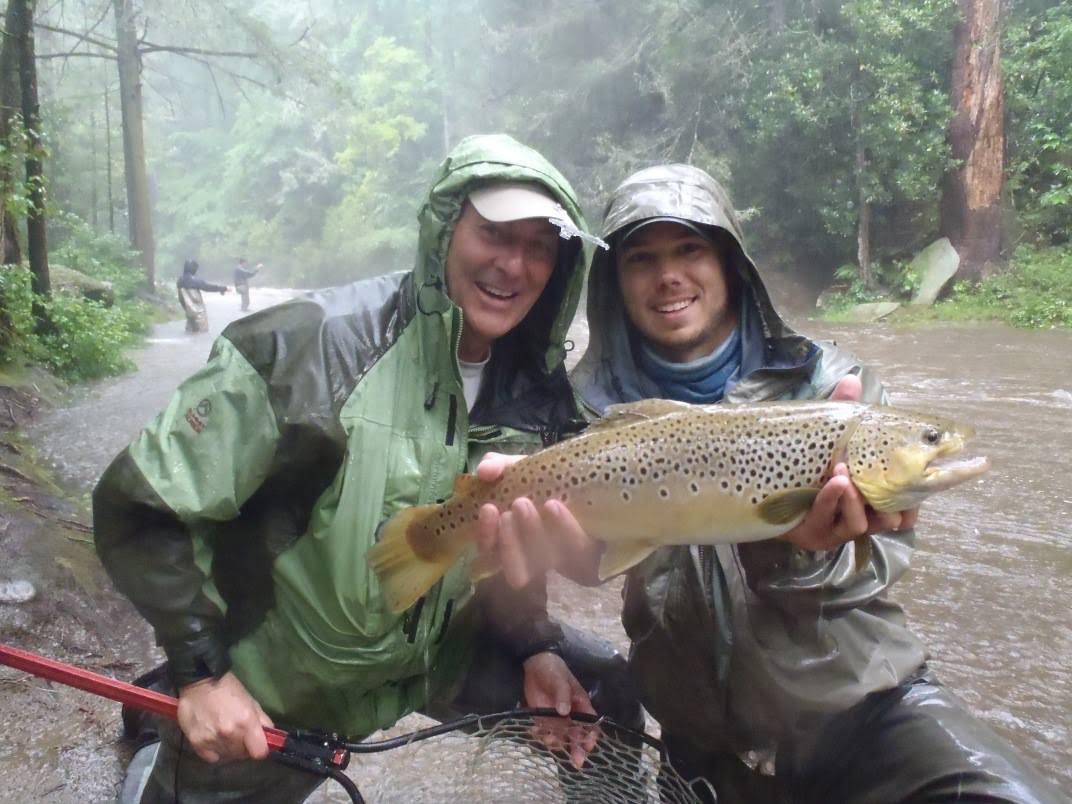What are you supposed to do when you have the whole day to go fish, but your favorite stream is about twice as high as you’re used to seeing it? Well, you can always stay home and tie more flies, but there’s no reason why you can’t get out there and hook into a few, maybe even a big one. While many fly-fishers consider fishing high water to be hopeless, in actuality this situation can grant you the opportunity to catch trout you may rarely get a crack at otherwise. These three tips can help you turn the tables to your advantage during high water flows.

1. When nymphing in high, off-color water, lengthen your leader and increase the diameter of your tippet.
A longer leader will enable you to reach trout that are holding deep, and heavier tippet will help you fight and land fish in currents that are stronger than usual. Since trout can’t see as well when the water is off-color water, there is usually no need to fish 5x or 6x. Try using 4x instead, or even 3x, if you’re fishing a big weighted girdle bug or other type of stonefly nymph. If the water is high but still clear—these conditions have been common on the Davidson recently—you may want to stick to the diameter of tippet you usually use. But don’t forget to lengthen your leader to help your nymphs get down to where they need to be.
2. Fish the banks, secondary currents, and eddies.
When the water is up, the main current is often too strong for the trout to hold in. As a result, they tend to push toward the banks, where the flow isn’t as strong and the water isn’t as deep. Here, they can comfortably face upstream and can easily move back and forth through the softer current as they feed. Trout also seek refuge in eddies, where you may find them facing downstream as they pick off insects in the swirling current. In large rivers, you can also try fishing braids and back channels when the water is up. You may be surprised by how many fish can stack up in what looks to be just a small riffle or foam-line near the bank.

3. Give the fish a good meal.
When the water rises, the proverbial trout buffet opens for business. All kinds of goodies are washed into the river for the fish to eat, not to mention the various hatches that a rise in water level will sometimes set off. High water days are a great time to fish a streamer, either by dead-drifting it under a strike indicator or by stripping it on a sink-tip. A few of my favorites are Slump Busters, Meat Whistles, and Zonkers. Weighted general-purpose nymphs, as well as San Juan worms and egg patterns, can also be very effective. When nymphing, make sure to use enough split shot, and put your indicator way up on your leader to adjust for the change in the river’s depth. Then go find an eddy or a secondary current along the bank and fish away. When you see your indicator twitch, set the hook and hang on tight; the high water often brings the big fish out to play…








